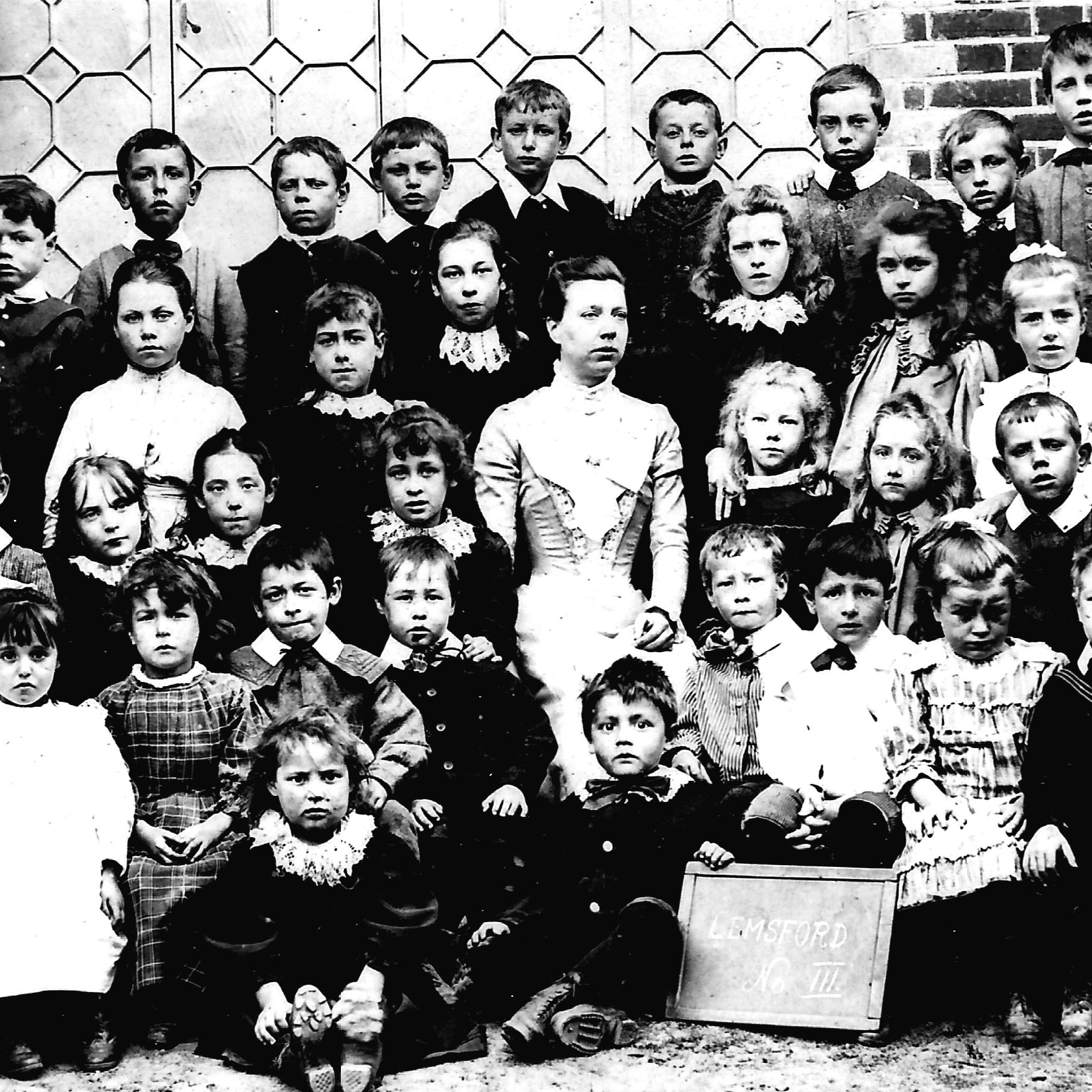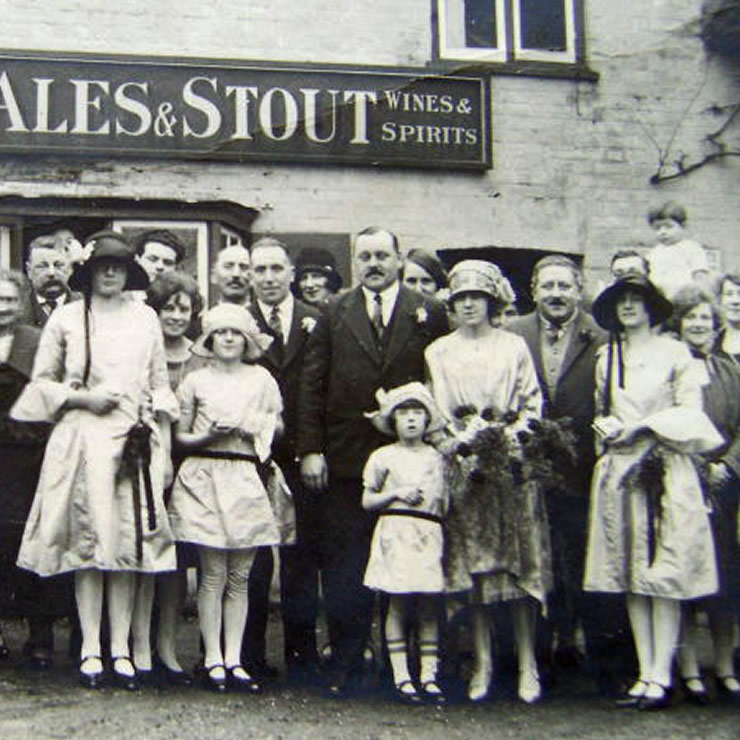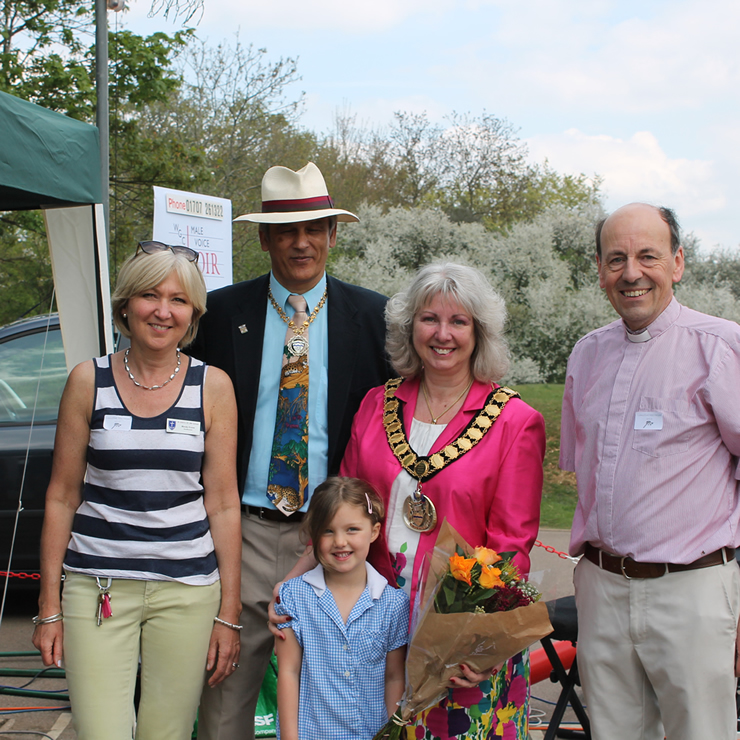TL2020
The Education Act of 1870 required provision be made for all children to have the opportunity for an education. Prior to this date few children, other than those from wealthy families, were able to attend any type of school. On the 4th March 1872, the first entry in the Head Teacher’s Log Book was made by Mrs Mary Seaman, the first Head Teacher. On that day, seventy-seven children, ranging in age from three to thirteen, were enrolled. They were divided into two classes - one being taken by Mrs Seaman and the other by her husband Walter, her assistant. They were all taught in one room, the room now used as the dining room in the oldest part of the school. The school was approved by the Government on the 16th May 1872.
This page examines the life of Earnest Brown. Admission Number:735
Earnest Brown attended St Johns from April 18th 1898 to June 26 1903
Date of Birth:Nov 5 1890 . Parents: Herbert :
Lived at Cromer
Left St John’s due to attending St Pauls Warden School then became a gardener
Cromer Hyde 1914-1918 by H.J. Brown
Chequers (Crooked Chimney) still stands on the corner of Cromer Hyde lane a mile or so north of Lemsford on the Hatfield to Wheathamstead road, and to Mary and I in our youth and to Eileen and I when we were courting it was a well-known spot, my main connection to the Chequers was my Uncle Ernie who was landlord from 1928 to 1952. The name goes back to the middle ages when a type of beer was made from the chequered bark of a woodland tree, but I don’t think chequered beer was ever sold there. Still a popular Pub and has fine food and a great choice of real ales.
By the time of the Great War 1914-1918, the Brown family who lived in Cromer Hyde Lane had left their old Victorian cottages at the far end of the lane and moved to a new house, not so far up the lane, built for them by Lord Mount Stephen. It was larger with a bigger garden to grow all their vegetables and they must have been delighted, particularly as it had a well of its own, thus releasing the oldest children from the long walk to the nearest pump. The oldest members of the family had already left home, but Grannie was still to have two more children, Stephen born in 1914 only to die in 1924 and Esme Jane born in 1918 and dies in 1919.
Ernest, the oldest son, born in 1891, had left home and gone into service and became a footman for the Lord and Lady Harrington of Elvaston Castle, Derbyshire. He had been highly thought of by the family and had travelled abroad with them. Frederick, born in 1896 had also gone into service and became a footman. Ern and Freds dad was Alfred Henry Brown. The two brothers together with their cousin Samuel Turner, son of my Grandfather’s sister Edith, decided to volunteer and together they joined the Prince of Wales Rifles. They all served in France and tragically at the Battle of the Somme, Sam was killed, Fred was wounded in the head, arm and knee and Ern suffered shell shock.
My father Herbert born in 1892 had married my mother at Lemsford in 1913. Father left school at 13/14 he became a farmer’s boy on Handside farm before joining Ebbens the butcher in Hatfield and learning the butchery trade until he joined the Police in 1914. In 1918 he joined the Machine Gun Corps, but the war ended before he went to France and he went back to the Police.
Auntie May, my father’s sister, born in 1899 had gone into service and for some of the war years worked in the kitchens at Hatfield House, home of the Salisbury’s. Her sister Eva born 1901 was a housemaid at Brocket, but the other children were still at home.
I expect that life in the district must have carried on much as usual, occasionally shocked by the war news or when a local man was killed or wounded. As it was in the last war, country folk had access to rabbits, pigeons and their own vegetables and did not feel the pinch of rationing as much as folk in the cities. One thing that did affect them all were the Zeppelin raids because although they were not the target, they could hear them overhead. When the Germans started to bomb London, their airships flew west of the North Sea and when they were over land, turned south, finally to pick up the Thames, clearly visible on moonlit nights. This meant that as they approached North London they often went over parts of Hertfordshire and the drone of their engines must often have been heard in the Hatfield area. On one occasion, bombs were dropped on the Essendon area and the two young daughters of the village blacksmith were killed, much to the anguish and anger of local people. I think they were relatives of the Flitney family who lived in Cromer Hyde.
Ern and Fred’s dad was Alfred Henry Brown was born at Basingstoke, Hampshire on April 3rd 1867. He worked for Lord Mount Stephen at Brocket Park, Lemsford, Herts. Where he was again under keeper, although it was a much bigger place and famous for its game birds. The future King George the Fifth often went to Brocket on shoots and there is a well known family story about an argument among the visitors after dinner about one of the hundreds of birds that had been shot. They asked for the bird to be found and brought to the drawing room but, of course, the keepers couldn’t do this. Nevertheless, they found a bird that fitted the bill and this was sent up and nobody knew the difference.
. A typical Rural dwelling in Lemsford parish during WW1
The pair of cottages were identical, each with two rooms up and two rooms down, and were built of brick with tiled roofs. The front gardens were small with a white picket fence and gates, but the back gardens were large. The back-room downstairs was the kitchen with a small range for cooking and a large strong kitchen table with chairs. There was a meat safe on the wall, much used before the coming of refrigerators. In one corner was a simple flat stone sink, which emptied into a large bucket underneath. The front room downstairs was the parlour, containing the best bits of furniture One of the bedrooms was used by the children with girls in one bed and boys in the other. The beds were large and strong with thick feather mattresses. The other bedroom was used by my grandparents and the youngest baby. Each room had a washstand with a large bowl on top and a jug standing in it
Food and Drink
Like most country people, they had chickens in a run kept on scraps and chicken feed, and the children gave them all names. Eggs were always assured for the kitchen and as the hens grew old there was an occasional roast which was very welcome. When the pig had to be killed a local butcher came and cut it up and only the squeal was wasted. My grandmother then salted down joints by rubbing in salt petre and salt and then hung them up wrapped in old curtains in the outhouse. Relatives and friends shared in the abundance of meat and reciprocated when their pigs, in turn, were killed. Meat came from the butcher in Hatfield, who called twice a week in a pony and trap, as did the baker. Milk and butter came from the farm in Brocket and groceries were purchased at a little shop in Lemsford or in Hatfield.
Utilities and garden
There was no water laid on and no pump in the garden, so when they were big enough this was a job the boys had to do and there was an old fashioned yoke so they could carry two buckets at a time, down the lane to the well. This meant that water was a very precious thing and not to be wasted--how different our attitude today when we get it at the turn of a tap. Naturally, there were no sewers either, and toilet arrangements were a shed in the garden with a seat and a large bucket underneath. The men and boys went behind the hedge most of the time and when the bucket was full it was taken to a midden at the end of the garden and in due course dug into the soil. The large garden provided, practically all of the family’s vegetables and the adults worked to provide produce throughout the year. Potatoes, swedes and carrots were stored in clamps in the garden and onions in the shed. Heating was by coal or wood, the former being supplied by coal merchants in their horse drawn carts from Hatfield coal yards.
Education, Medication and Transport
The children went to a village school at Lemsford, which is still there today. There were no school meals in those days, so having walked two miles to school the children stayed all day and took something for their lunch, although sometimes my grandmother would take it at mid-day. Discipline was strict at school, but it gave the children a good basic education of the three Rs.
In the case of serious illness, the doctor would come from Hatfield in his pony and trap, but for everyday illnesses and ailments old country remedies were used, passed on from generation to generation. Headaches were treated by dipping a rag in vinegar and tying it round the head, or if it was a summer headache my granny recommended crushing a bit of washing soda to powder, putting it on the thumb and sniffing it up the nose. I certainly forgot the headache! Iodine was always applied to cuts and abrasions, and for chest colds a piece of brown paper smeared with goose grease and then applied next to the skin, under the vest. Another remedy at that time for tooth ache was to smear a piece of brown paper with grease, shake on pepper and then apply this to the cheek where the tooth was painful and wind a scarf or towel round the head. This had the effect of making the cheek very hot and uncomfortable---so much so that the toothache became secondary. Rosehip syrup was used for sore throats and colds.
If the family went visiting it meant walking and they naturally went by the shortest route, be it lane, footpath or over fields and through woods. It was a common sight in those days to see a family strung out in a crocodile, parents and youngest in front and older children in the rear, all smartly dressed to impress those they were visiting Most documentaries and articles on the First World war focus on the lives of the men who went to war, but the home front was a battle as well for the ones left behind. It was a hard life with no labour-saving devices, work that paid low wages and no benefit system and a diet that kept you alive, eating was to survive not for pleasure. I thank Jack for his memories and the for recording them for ever. To read more about his life and his family
St Johns School Lemsford Info

Lemsford Local History group have decided to dedicate 2022 to working with St John’s School to celebrate the school’s 150-year anniversary. This website is also dedicated to this special year. On the 4th of March 1872, the first entry in the Head Teacher’s Log Book was made by Mrs Mary Seaman, first Head Teacher. On that day, seventy-seven children, ranging in age from three to thirteen, were enrolled. They were divided into two classes - one being taken by Mrs Seaman and the other by her husband Walter, her assistant. They were all taught in one room, the room now used as the dining room in the oldest part of the school. The school was approved by the Government on the 16th of May 1872. We hope the school, local community, and anyone with an interest in St Johns school will Contribute Articles, memories, and images to this Website. Email info@lemsfordhistory.co.uk
- St Johns School index page- Learn More
- Johns School Time Line - Learn More
- St Johns School Articles - Learn More
- St Johns School Class Photos - Learn More
- St Johns School Head Teachers - Learn More
- St Johns School Gallery - Click Here - Learn More




